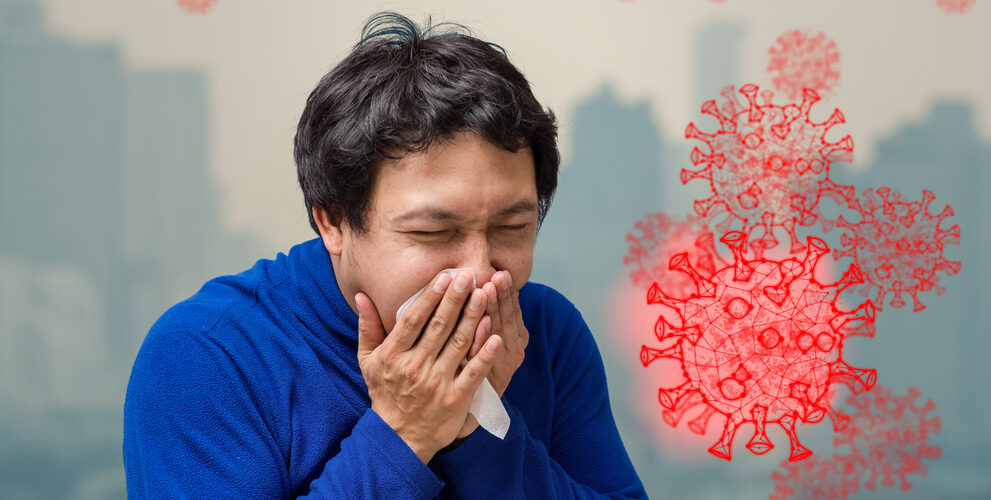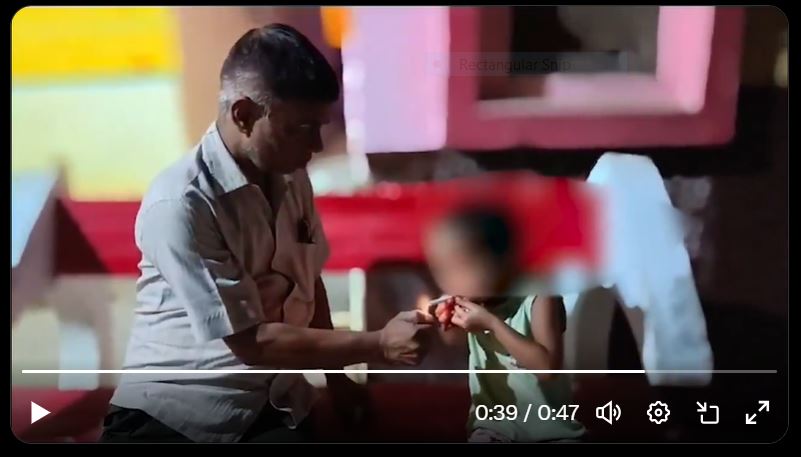Latest
Debunking the HMPV panic: Expert explains risks, symptoms, and precautions
"If you go around asking 100 doctors today, everybody would have seen HMPV cases", Dr Tanu Singhal, Consultant, Paediatrics and Infectious Disease at Kokilaben Dhirubhai Ambani Hospital, Mumbai, tells First Check in an exclusive interview
Author
Author
- admin / 11 months

- 0
- 8 min read

Author
India has been reeling with shock, concern and panic, as seven cases of the Human Metapneumovirus (HMPV) among children have been reported in the country in the past two days. Experts and government officials and ministers have been quick to assuage concerns, urging people to stay calm, elaborating that this was not a “new” virus, and assuring people that there was no need to raise any alarms yet.
However, the detection of the virus in the country, coinciding with reports of an outbreak in China, has made many fear of what this means for the country and its people, especially with the memories of COVID, the lockdown, and the many lives and livelihoods that were lost during the pandemic still fresh for many people.
First Check spoke to Dr Tanu Singhal, Consultant, Paediatrics and Infectious Disease at Kokilaben Dhirubhai Ambani Hospital, Mumbai, to help answer the many questions that people have about the illness- from what is HMPV, why haven’t we heard of it before, what are its symptoms, to how is it transmitted, how is it different from other respiratory illnesses, and if one should start wearing masks again.
Here are the excerpts of the conversation.
First and foremost, should we be worried about this new virus, HMPV? Will we need to start wearing masks again, as we did during COVID?
This Human Metapneumovirus (HMPV) has been around for 20 years. It was first detected in 2001, and it has been detected in respiratory infections in both children and adults. We have been seeing it every year… Earlier, we weren’t doing these tests regularly, but now we do these tests. So we pick it up. There have been reports that China is seeing pneumonia due to this virus, and that happens every year in the winter season. So I don’t think there’s any need to be alarmed. Recently, there were reports of two children detected with HMPV in Karnataka, but we’ve been seeing children with this virus every year, so I don’t see why there is a reason to be so alarmed about it. Additionally, there’s no information suggesting that a new strain is circulating.

So, while I understand that you say that the HMPV isn’t new, it has been around for some time now, it still begs the question, why haven’t we heard of it till now, and what triggered this panic suddenly?
The panic was triggered by videos circulating about Chinese hospitals being overwhelmed. There were also reports that people in China had influenza, mycoplasma, and HMPV. Naturally, this drew attention. We’re seeing more pneumonia cases in India as well, along with mycoplasma and flu, which is common in the winter season. Other countries, like the U.S., are seeing similar seasonal respiratory infections. The situation in China hasn’t been fully verified, and we don’t know the full extent of their claims. We need to understand that these respiratory infections are common in winter across the world.
Can you explain what HMPV is and how is it different from other respiratory viruses like the flu or COVID-19?
HMPV is an RNA respiratory virus that belongs to the family Paramyxoviridae. It is similar to other respiratory viruses like influenza, parainfluenza, respiratory syncytial virus (RSV), and adenoviruses. These are the top viruses causing respiratory infections in both children and adults. Among these viruses, HMPV contributes less to respiratory infections or pneumonia than others like RSV and influenza. Unlike influenza or COVID-19, there is no specific antiviral treatment or vaccine for HMPV.
Like in COVID-19, we experienced the loss of smell, similarly, do we know of any specific symptoms for HMPV?
No, there are no specific symptoms for HMPV. The symptoms are similar to those of other respiratory infections, like fever, runny nose, sore throat, cough, and body aches. These symptoms are common in various respiratory viruses like the flu, COVID, or common cold. To accurately diagnose HMPV, a PCR test is required. Most people with HMPV will recover with mild symptoms, but a small percentage may develop pneumonia, which could require hospitalization.
Can you tell who is most at risk of developing pneumonia from HMPV? Is it the same as with COVID-19 and other respiratory illnesses, where the elderly and immunocompromised are more vulnerable?
HMPV can affect children, especially those under the age of five, and they are at risk of developing pneumonia. This is one difference between COVID-19 and HMPV. While children were generally spared during COVID-19, they are more susceptible to pneumonia from HMPV. In addition, elderly individuals and immunocompromised people are also at higher risk, similar to other respiratory viruses.
Do we use the usual PCR test to diagnose HMPV, or is HMPV diagnosed differently?
HMPV can be diagnosed through a PCR test, specifically the BioFire multiplex PCR, which costs around 10,000 rupees. This is a high cost, and people with just mild symptoms like fever and runny nose typically won’t get this test done. The test is more likely to be done for those with pneumonia, and not everyone with HMPV will be tested. Therefore, there might be many undiagnosed cases since testing is not routine for mild symptoms.
Can you tell us what precautions can individuals take to prevent spreading the virus, especially since there’s no vaccine for it?
If someone is infected, they should wear a mask to prevent spreading the virus and should stay at home until they are better. They should avoid going to work, school, or public places while sick. The same precautions should be followed by healthy individuals to avoid getting infected. In case of a surge in cases, the same preventive measures as during COVID-19—such as wearing masks, avoiding crowded places, and practicing hand hygiene—should be followed. However, at the moment, there is no indication of an outbreak of HMPV.
Now, we know that there is no indication of an outbreak, but do we know of any emerging trends in how the virus might evolve or be transmitted?
As of now, we are not seeing a significant increase in HMPV cases. We are testing for it with the multiplex PCR, but it hasn’t shown up prominently in India. Some isolated cases have been reported, but no widespread surge is observed. Other respiratory viruses, like mycoplasma and influenza, are more common during this season, but we don’t know what will happen in the coming weeks.
Since it is a virus, can HMPV be included in the flu vaccine in the future?
It is unlikely that HMPV will be included in the flu vaccine anytime soon. For a vaccine to be developed, the virus needs to be considered a significant health threat, but currently, HMPV isn’t seen as a major problem requiring a vaccine. Vaccines are being developed for viruses like RSV and influenza because they are more impactful. There is no indication yet that HMPV will be included in future vaccines.
Why do doctors seem to be talking so much about HMPV now, especially with the recent reports from Bangalore?
Doctors are being asked about HMPV by the media because there are cases being reported. For example, we had an HMPV case admitted in our hospital. It’s possible that doctors, when asked, mention cases they’ve seen, but this doesn’t necessarily mean there’s a new surge. It’s important to note that cases like these are being seen across hospitals, but the situation is not alarming, and there’s no widespread panic. Media reports tend to exaggerate the situation, but there’s no need to overreact… If you go around asking 100 doctors today, everybody would have seen 1 or 2. I have seen an HMPV case yesterday.
Is there any other important point you would like to add regarding the situation?
It’s essential not to panic based on rumours or exaggerated media reports. There is no evidence that HMPV has mutated into a more dangerous strain. This virus has been around for a long time and doesn’t pose a greater threat than other seasonal respiratory infections. We should focus on facts and not create unnecessary fear.










